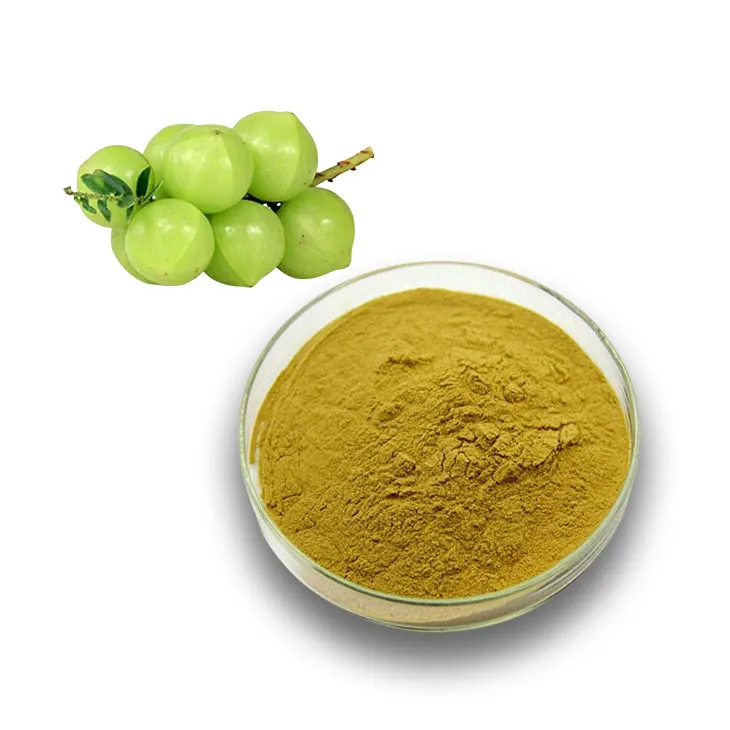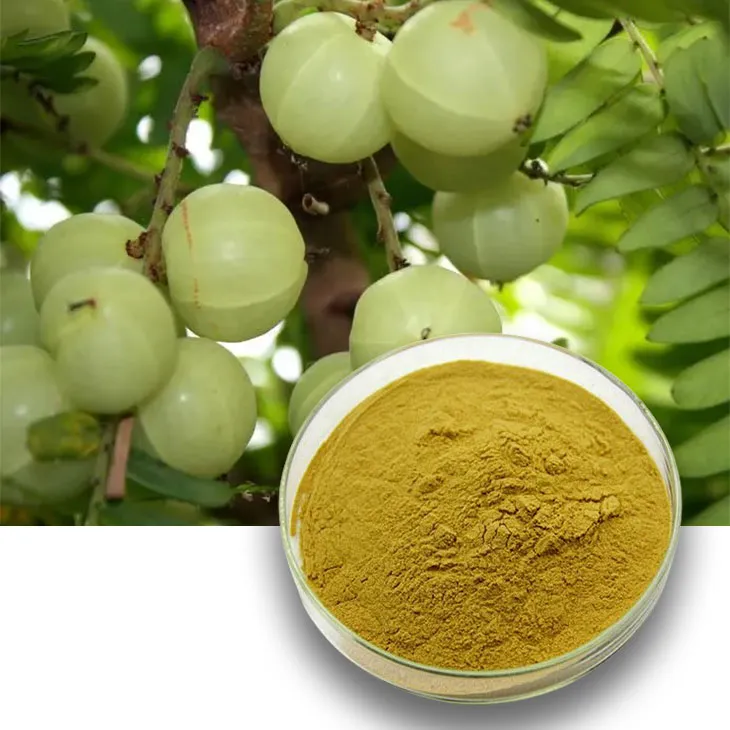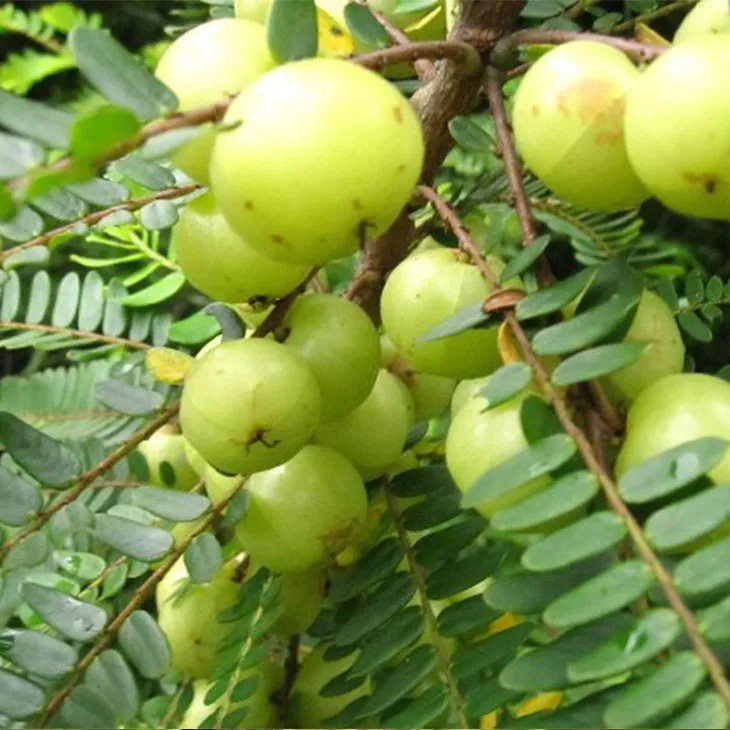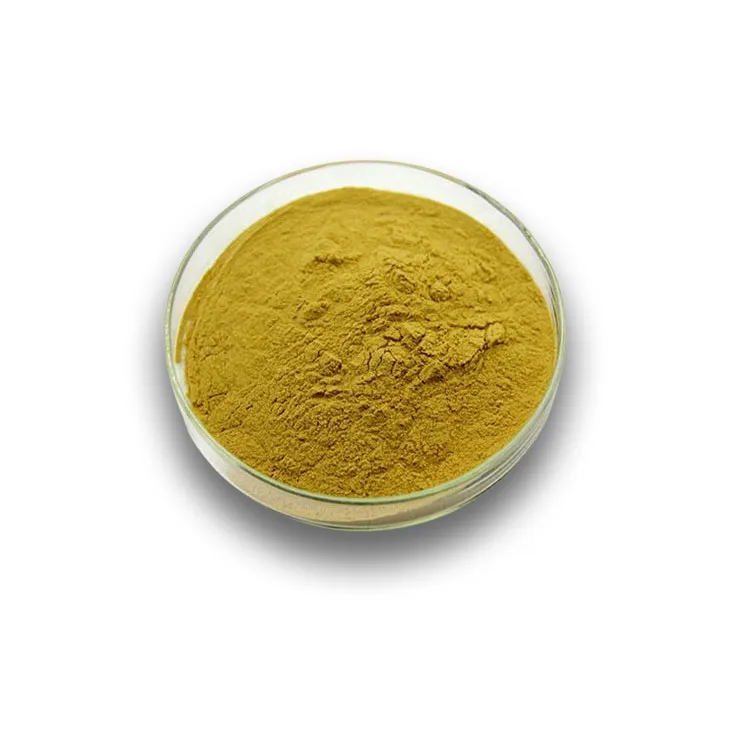- 0086-571-85302990
- sales@greenskybio.com
The Best Phyllanthus emblica Extract.
2024-11-14

Introduction
The Phyllanthus emblica, also known as Indian gooseberry, has been used in traditional medicine systems for centuries. Its extract is rich in various bioactive compounds that offer numerous health benefits. These include antioxidant, anti - inflammatory, and immunomodulatory properties. However, not all Phyllanthus Emblica Extracts are the same. To ensure that you are getting the best product for your needs, it is essential to understand the factors that distinguish one extract from another.

1. Extraction Solvents and Their Impact
1.1 Water - based Extraction
Water is a commonly used solvent for extracting Phyllanthus emblica. It is a relatively mild solvent that can extract water - soluble compounds such as vitamins (e.g., vitamin C) and some polyphenols. One advantage of water - based extraction is its safety and simplicity. The process is often more environmentally friendly compared to other extraction methods. However, water may not be able to extract all the bioactive compounds present in Phyllanthus emblica, especially the lipid - soluble ones.
1.2 Ethanol - based Extraction
Ethanol is another popular solvent for extracting Phyllanthus emblica. It can extract a wider range of compounds compared to water. Ethanol can dissolve both water - soluble and lipid - soluble bioactive substances, such as flavonoids and tannins. The use of ethanol in extraction often results in a more comprehensive extraction of the plant's beneficial components. However, the concentration of ethanol needs to be carefully controlled. High - concentration ethanol may cause some denaturation of proteins or other unwanted effects. Also, ethanol - based extracts need to be processed further to ensure the removal of ethanol residues for safety reasons, especially if the extract is intended for oral consumption.
1.3 Other Solvents
Some other solvents like hexane or chloroform may also be used in the extraction process, but they are less common in the production of Phyllanthus Emblica Extracts for health - related applications. These solvents are more suitable for extracting specific lipid - soluble compounds. However, due to their potential toxicity, they require very strict purification processes to ensure that no harmful residues remain in the final product. In general, for consumer - oriented Phyllanthus Emblica Extracts, water - and ethanol - based extraction methods are more preferable.

2. Antioxidant Levels in Different Extracts
2.1 Measuring Antioxidant Activity
Antioxidant activity is one of the most important properties of Phyllanthus emblica extracts. It can be measured by various methods, such as the DPPH (2, 2 - diphenyl - 1 - picrylhydrazyl) free radical scavenging assay, ABTS (2, 2' - azinobis - (3 - ethylbenzothiazoline - 6 - sulfonic acid)) assay, and FRAP (Ferric Reducing Antioxidant Power) assay. These assays help to determine the ability of the extract to neutralize free radicals, which are associated with various diseases and aging processes.
2.2 Factors Affecting Antioxidant Levels
- The type of extraction solvent used can significantly influence the antioxidant levels in the extract. As mentioned earlier, ethanol - based extracts may contain more antioxidant compounds compared to water - based extracts in some cases.
- The quality and origin of the Phyllanthus emblica raw material also play a role. Plants grown in different regions may have different levels of bioactive compounds due to variations in soil, climate, and cultivation methods.
- The extraction process parameters, such as extraction time, temperature, and pressure, can affect the antioxidant levels. Longer extraction times or higher temperatures may lead to the degradation of some antioxidant compounds, while too short extraction times may result in incomplete extraction.
2.3 Importance of High Antioxidant Levels
High antioxidant levels in Phyllanthus emblica extracts are beneficial for several reasons. They can help protect the body's cells from oxidative damage, which is implicated in many chronic diseases, including cancer, heart disease, and neurodegenerative diseases. Antioxidants in the extract can also enhance the immune system, improve skin health, and slow down the aging process.

3. Standardized Extracts
3.1 What are Standardized Extracts?
Standardized extracts are those in which the content of specific bioactive compounds is controlled within a certain range. For Phyllanthus emblica extracts, this may involve standardizing the levels of key polyphenols, flavonoids, or tannins. The purpose of standardization is to ensure the consistency and reproducibility of the extract's quality and its therapeutic effects.
3.2 Benefits of Standardized Extracts
- Consistency in quality: With standardized extracts, consumers can expect the same level of bioactive compounds in each batch of the product. This is especially important for those using the extract for medicinal purposes.
- Accurate dosing: Standardized extracts allow for more accurate dosing, as the content of the active ingredients is known. This helps in achieving the desired therapeutic effects without the risk of under - or over - dosing.
- Research - based efficacy: Standardized extracts are more likely to be used in scientific research, which further validates their efficacy and safety. This provides more evidence - based support for their use in various health applications.
3.3 How to Identify Standardized Extracts?
- Look for product labels that clearly state the content of specific bioactive compounds. For example, a label may indicate the percentage of flavonoids in the Phyllanthus emblica extract.
- Check for certifications or quality marks from recognized organizations. These can indicate that the product has been tested and meets certain standards for standardization.
- Refer to scientific literature or product reviews. If a particular brand of Phyllanthus emblica extract has been studied in research and is known for its standardized quality, it is more likely to be a reliable choice.

4. Other Considerations
4.1 Purity and Additives
The purity of the Phyllanthus emblica extract is crucial. A high - quality extract should be free from contaminants such as heavy metals, pesticides, and other harmful substances. Some manufacturers may add additives to the extract, such as preservatives or flavorings. While these may be necessary in some cases, it is important to ensure that the additives are safe and do not interfere with the bioactivity of the extract.
4.2 Brand Reputation and Manufacturing Practices
- Brand reputation: Choose a well - known and trusted brand. A brand with a good reputation is more likely to produce high - quality Phyllanthus emblica extracts. You can research online reviews, customer testimonials, and the brand's history in the supplement market.
- Manufacturing practices: Look for products that are manufactured in facilities that follow good manufacturing practices (GMP). GMP - compliant facilities ensure that the product is produced under strict quality control standards, reducing the risk of contamination and ensuring the integrity of the extract.
4.3 Price and Value for Money
While price should not be the sole determining factor, it is important to consider the value for money when choosing a Phyllanthus emblica extract. A more expensive product does not necessarily mean it is of higher quality, and vice versa. Compare the prices of different products in relation to their quality, such as the antioxidant levels, standardization, purity, and brand reputation. Sometimes, a mid - range product may offer the best balance between quality and price.
Conclusion
Choosing the best Phyllanthus emblica extract requires careful consideration of multiple factors. The type of extraction solvent, antioxidant levels, standardization, purity, brand reputation, and price all play important roles. By understanding these factors and doing your research, you can select an extract that meets your health needs and provides the maximum benefits. Whether you are using it for its antioxidant properties, anti - inflammatory effects, or other health - related reasons, a high - quality Phyllanthus emblica extract can be a valuable addition to your health regimen.
FAQ:
What are the common extraction solvents for Phyllanthus emblica extract?
Common extraction solvents for Phyllanthus emblica extract include water, ethanol, and methanol. Water - based extraction is a more natural method and is often used in traditional preparations. Ethanol and methanol are organic solvents that can effectively extract various active components from Phyllanthus emblica. However, when using organic solvents, proper safety precautions need to be taken during the extraction process.
How can we measure the antioxidant level in Phyllanthus emblica extract?
There are several methods to measure the antioxidant level in Phyllanthus emblica extract. One common method is the DPPH (2,2 - diphenyl - 1 - picrylhydrazyl) free radical scavenging assay. In this assay, the extract is mixed with DPPH solution, and the decrease in the absorbance of DPPH is measured. Another method is the ABTS (2,2' - azinobis - (3 - ethylbenzothiazoline - 6 - sulfonic acid)) assay. These assays can provide information about the antioxidant capacity of the extract, which is related to its potential health benefits.
What does a standardized Phyllanthus emblica extract mean?
A standardized Phyllanthus emblica extract means that the extract has been processed to ensure a consistent level of certain active components. For example, it may be standardized for a specific amount of phenolic compounds, flavonoids, or other bioactive substances. Standardization is important because it allows for more reliable and reproducible results in terms of the extract's health effects. It also helps in quality control during the manufacturing process.
Are there any side effects of taking Phyllanthus emblica extract?
Generally, when taken in appropriate amounts, Phyllanthus emblica extract is considered safe. However, some people may experience mild side effects such as digestive discomfort, including nausea or diarrhea. In addition, if a person has an allergy to Phyllanthus emblica or related plants, they may have an allergic reaction. It is always advisable to consult a healthcare professional before starting to take any new supplement.
How should Phyllanthus emblica extract be stored?
Phyllanthus emblica extract should be stored in a cool, dry place, away from direct sunlight. If it is in a liquid form, it is often best stored in a dark - colored, airtight container to prevent degradation due to light and air exposure. The appropriate storage conditions can help maintain the stability and potency of the extract over time.
Related literature
- Antioxidant Activity of Phyllanthus emblica Extract: A Comprehensive Review"
- "The Role of Standardization in Phyllanthus emblica Extract Production"
- "Comparative Study of Different Extraction Solvents for Phyllanthus emblica"
- ▶ Hesperidin
- ▶ Citrus Bioflavonoids
- ▶ Plant Extract
- ▶ lycopene
- ▶ Diosmin
- ▶ Grape seed extract
- ▶ Sea buckthorn Juice Powder
- ▶ Fruit Juice Powder
- ▶ Hops Extract
- ▶ Artichoke Extract
- ▶ Mushroom extract
- ▶ Astaxanthin
- ▶ Green Tea Extract
- ▶ Curcumin
- ▶ Horse Chestnut Extract
- ▶ Other Product
- ▶ Boswellia Serrata Extract
- ▶ Resveratrol
- ▶ Marigold Extract
- ▶ Grape Leaf Extract
- ▶ New Product
- ▶ Aminolevulinic acid
- ▶ Cranberry Extract
- ▶ Red Yeast Rice
- ▶ Red Wine Extract
-
Buckthorn bark extract
2024-11-14
-
Tongkat Ali Extract
2024-11-14
-
Oat Straw Extract Powder
2024-11-14
-
Dan Shen Root Extract/Salvia Root Extract
2024-11-14
-
Camu Camu Extract
2024-11-14
-
Angelica sinensis extract
2024-11-14
-
Konjac Powder
2024-11-14
-
Baicalin
2024-11-14
-
Withania Somnifera Extract
2024-11-14
-
Giant Knotweed Extract
2024-11-14





















